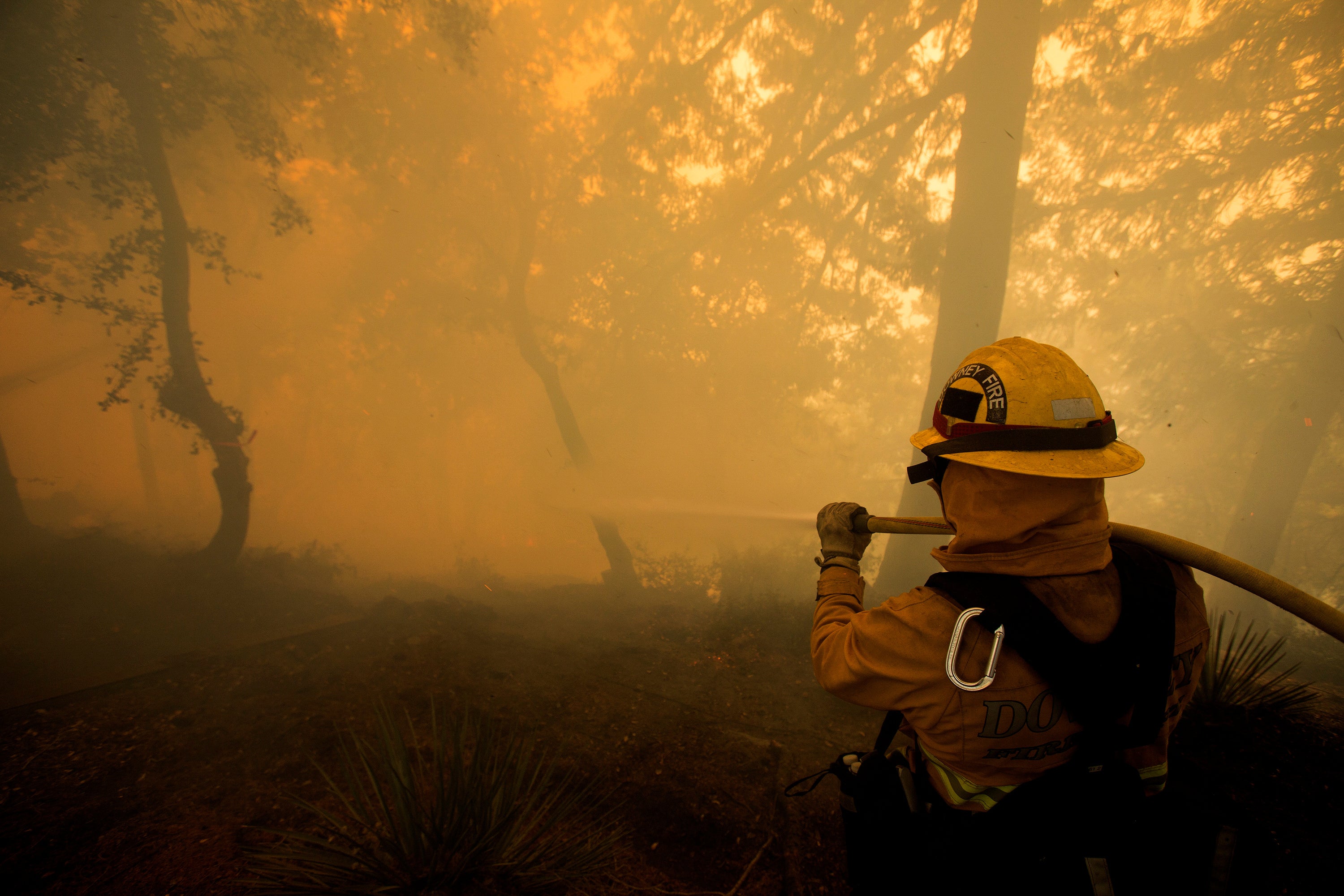I was a firefighter. There’s a way to stop wildfires happening — but the US government won’t allow it
Indigenous people knew this, but there’s a macho resistance to reintroducing these methods

Your support helps us to tell the story
From reproductive rights to climate change to Big Tech, The Independent is on the ground when the story is developing. Whether it's investigating the financials of Elon Musk's pro-Trump PAC or producing our latest documentary, 'The A Word', which shines a light on the American women fighting for reproductive rights, we know how important it is to parse out the facts from the messaging.
At such a critical moment in US history, we need reporters on the ground. Your donation allows us to keep sending journalists to speak to both sides of the story.
The Independent is trusted by Americans across the entire political spectrum. And unlike many other quality news outlets, we choose not to lock Americans out of our reporting and analysis with paywalls. We believe quality journalism should be available to everyone, paid for by those who can afford it.
Your support makes all the difference.This year, it started with an uncharacteristic lightning storm. It’s not that fire season hadn’t begun; it had — first in the Southwest, as usual, and then in Colorado. But the lightning storm ignited several fires across the state of California, setting the entire west ablaze.
Fire season comes every year, but this one is arguably the worst we’ve seen, and that includes the astutely named “Big Burn,” which occurred in the Northern Rockies in 1910. This is partially because of climate change. Less snow in the winter, later summers, and earlier springs lead to parched soils, which in turn lead to crispy brush, grass, and more vulnerable trees.
It can also be attributed to decades of forest mismanagement—many of our public lands have been mismanaged in the west (as well as throughout the United States) since they were removed from the Indigenous people who lived here before Europeans arrived. The most dire form of mismanagement? The removal of fire.
This isn’t new information, although it’s being treated like it is. Fire suppression has always been controversial, particularly in the west and southeastern United States, two landscapes whose ecological health is improved by intermittent burning. In the early 1900’s, many ecologists and land managers argued against suppression. They’d observed Native Americans burning the land, and promoted what was then dubbed “Paiute Forestry,” which meant regular burning.
But those who were against fire, primarily foresters and timber companies, said that fire was evil, and its presence would create a “timber famine,” which would lead to a lack of building materials.
The foresters and timber companies won out, but fire advocacy always resurfaced, most significantly in the early 1960’s, when, in Yellowstone, park officials were met with a glut of elk, which were eating all sorts of important plants and disrupting local ecology. An advisory board was gathered, but the outcome was unusual. The problem wasn’t the elk. It was the lack of fire. This was emphasized by the head of the advisory board, A Starker Leopold, whose father was the famous naturalist Aldo Leopold. New seedlings and shoots weren’t regenerating because there was no fire to encourage them.
Slowly, the Park Service began to reintroduce fire to its landscapes, but there was still resistance, both within the NPS and other agencies like the Forest Service and BLM. Had we fully introduced fire, both by monitoring natural starts rather than suppressing them as well as creating more prescribed burns, we likely wouldn’t be seeing so much extreme fire behavior now — although the effects of climate change would still have an impact.
But there has still been resistance to reintroducing fire on a large scale, and that resistance strengthens with each big fire season. Often, the reaction is to strengthen suppression resources rather than introduce more fire, and even when fire is introduced, there are many roadblocks to its implementation.
The culture of suppressing fire is a macho, militaristic domination that began so many years ago, and it continues. We use tools that emit greenhouse gasses, which in turn contribute to climate change, and timber companies benefit from salvage logging, which occurs after a fire has scorched a landscape.
The Leopold Report, which called for more fire, is still a relevant document, and although there are roadblocks to reintroducing natural fire on a large scale, it isn’t impossible. Many people throughout the United States, outside of the large federal agencies, are implementing community burning with the help of non-profit agencies such as the Nature Conservancy, and several Indigenous communities have slowly been reintroducing regular burning to their landscapes.
We need to reevaluate how we think of wildfire in the United States. While we’ll still need to suppress some fires, we can also find pathways to coexistence.
Join our commenting forum
Join thought-provoking conversations, follow other Independent readers and see their replies
Comments